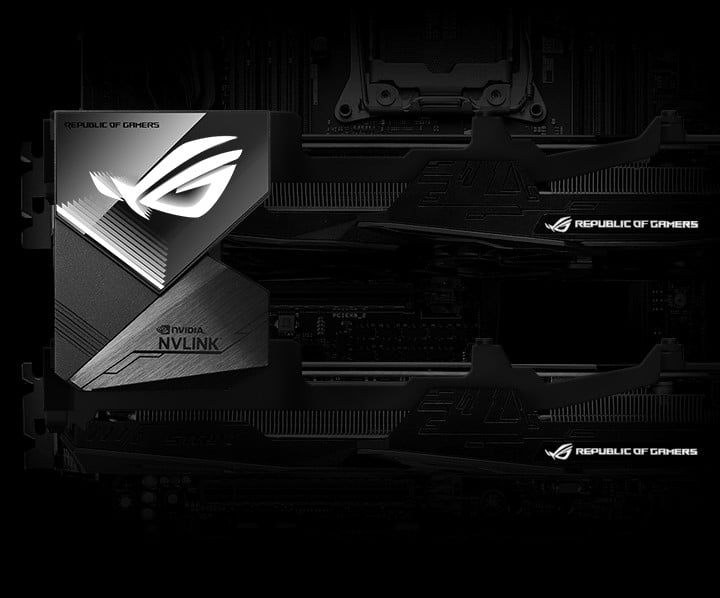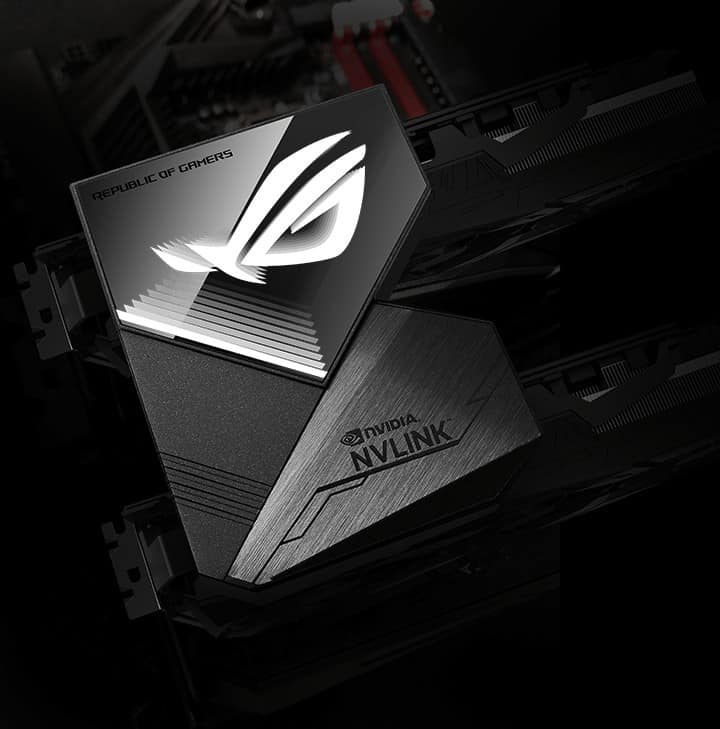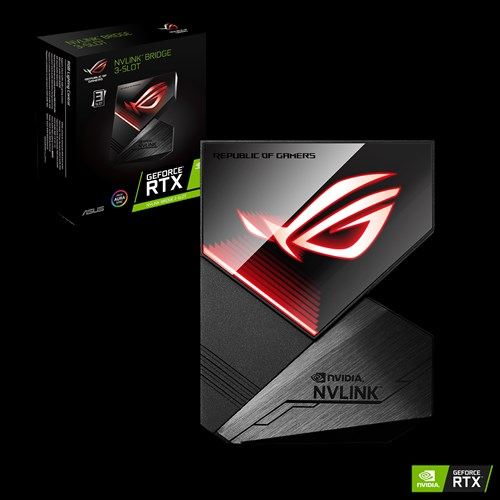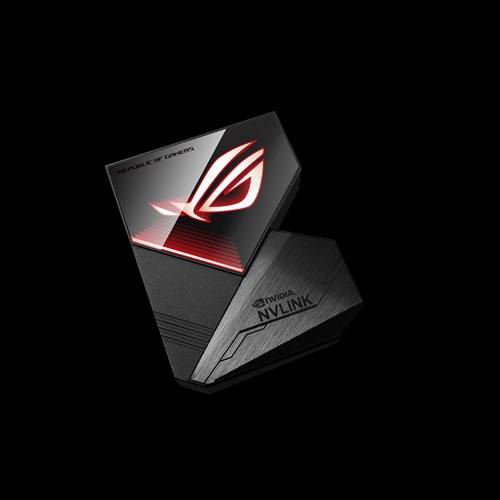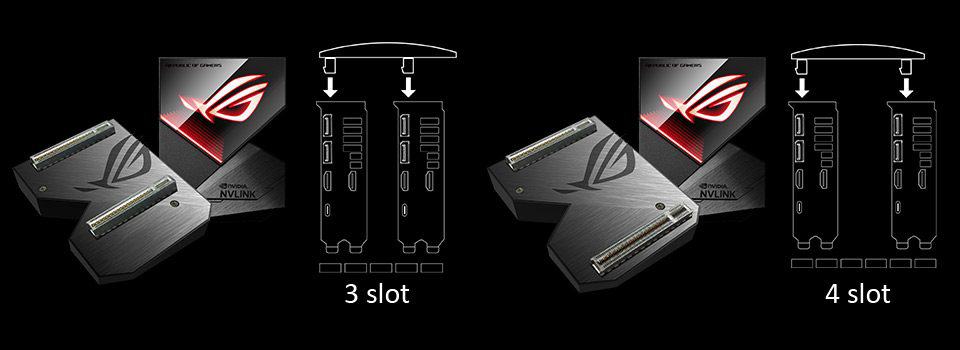Asus NVLink has been pictured and it is available on different stores. If you are not interested in getting the standard version then this is something worth looking into. The Asus NVLink comes with RGB and costs 89.90 Euros, which might seem like a lot but then again it does offer higher bandwidth as compared to the standard SLI bridge and this one looks better as well.
If you are going to pair 2 Asus RTX 2080 cards in SLI then the Asus NVLink will not only function well but will look good in the process of doing so. You can check out the Asus NVLink below:
Nvidia’s technical marketing director, Tom Petersen talked about the NVLink and the kind of performance boost it will have to offer in games. According to him the gains will be small. This might be disappointing for some people but it is worth mentioning that this could lead to better performance in the future. The following is what Peterson had to say in this regard:
Now it is true that we might be able to do slightly better on some games, maybe reducing a little bit of the frame time because we have a bigger, badder link, but I think it’s going to be small.
It is worth mentioning that Nvidia does not encourge SLI or multi-GPU setups and unlike the graphics cards of old these cards can be used in dual SLI rather than 3-way or 4-way SLI. It is also worth mentioning that SLI support for games is not all that common and you would be better off getting a sigle more powerful graphics card rather then getting 2 mid-range cards. Peterson further went on to mention the following about Nvidia NVLink:
Think of the bridge more as we want to lay a foundation for the future and that requires us to move the infrastructure along. So we already have a multi-GPU application called SLI, why don’t we just make that work on a really high-bandwidth bridge bus? And once that works, and we get our bridges deployed, and people understanding that hey, this is a 100GB/s bridge, then game developers will see that.
Let us know what you think about the Asus NVLink and whether or not you would refer this over the standard NVLink from Nvidia.

